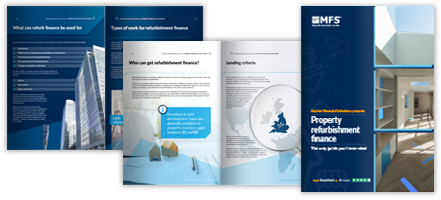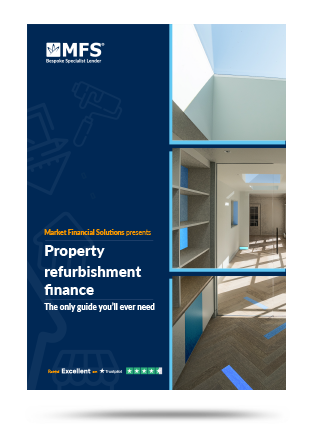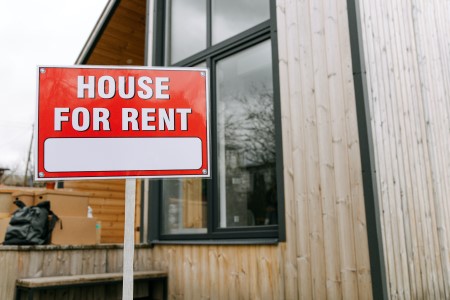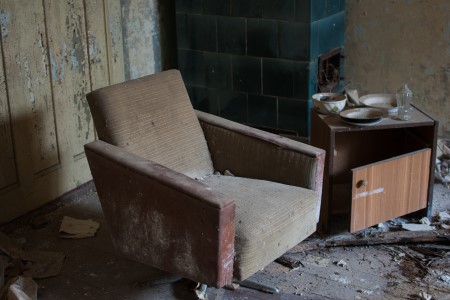Disclaimer
MFS are a bridging loan and buy-to-let mortgage provider, not financial advisors. Therefore, Investors are encouraged to seek professional advice.
The information in this content is correct at time of writing.

Sustainability and climate change become increasingly important to both buyers and renters. As such, insulation is being recognised as one effective way to improve a property’s energy efficiency. With this in mind, landlords and property investors may be considering ways to capitalise on the growing demand for more sustainable properties.
One such adaptation is cavity wall insulation, leading to the question: how much does cavity wall insulation cost? To help, we have pulled together this blog to outline everything that property investors need to know about how a cavity wall insulation might improve the efficiency of a property, and the various costs involved.
What is cavity wall insulation?
Before we answer, ‘how much does a cavity wall insulation cost?’, we must first understand what it is. In short, cavity wall insulation is a simple and effective way to reduce heating bills and improve the energy efficiency of a property.
If a property was built after the 1930s, it is likely that the external walls are made of two ‘skins’ with a cavity between them of around 50mm. This gap can be filled with insulating material. This stops warm air escaping to the outside, improving the energy efficiency of a property. As a result, cavity wall insulation can effectively pay for itself in the long run by reducing heating bills. Plus, there are a range of grants and offers available that make it a more affordable renovation for property investors.
The different materials and how much does a cavity wall insulation cost for each one?
Before embarking on a cavity wall insulation project, property investors must determine what insulation material would work best for their property. This will also help to answer the question how much cavity wall insulation will cost.
So, what are the different materials available, and what are their pros and cons?
Mineral wool
Mineral wool was the first material used to fill cavity walls, particularly in the 1950s. This material mostly comes from igneous rocks. But it can also be produced using recycled glass or sand.
Pros: Mineral wool is the most environmentally friendly insulation material. And there is plenty of it. It is also one of the cheaper and easier insulation materials to install, while still delivering a decent efficiency performance.
Cons: It relies on a clean and spacious cavity. Therefore, the space must be inspected, cleared, and cleaned before installation. This can be expensive and require professional help. It also means that mineral wool is not suitable for properties with small cavities. It could do more damage than good if there is not enough room. In particular, the material could cause issues if it clumps and causes dampness. It could damage the structures of a property or cause cracks in the building’s rendering.
Costs (approx. excluding labour): £10-15/m²
Polyurethan foam (PUR)
Polyurethan foam, or PUR, tends to be used in newer constructions. It is made of carbon-based organic units that combine to make a polymer.
Pros: This fact makes PUR the best material at insulating a property, while still being relatively cheap to install. PUR does not retain moisture in the same way that mineral wool does. Therefore, PUR should not cause mould to form in a property.
Cons: However, over time, PUR tends to shrink. As a result, water can often find its way into a building through gaps that are left by the retreating insulation.
Costs (approx. excluding labour): £20-25 to install
Polystyrene beads
Expanded polystyrene beads, or EPS, are made of carbon polymer. They are installed into a property’s walls with a bonding agent.
Pros: EPS is durable and lightweight, which makes installation a simple task. It is one of the cheaper options when it comes to cavity wall insulation costs. Additionally, it is pretty resistant to water, as well as being recyclable.
Cons: Again, a clean, spacious cavity is necessary for EPS insulation, which can increase costs. Moreover, gaps can appear in the cavity when using this material, especially if the bonding agent starts to wear. As such, mould and dampness can occur, while heat might begin to escape.
Costs (approx. excluding labour): £10-15/m²
Cavity batts
Finally, cavity batts are also often used in new builds. They have been on the market for around 30 years. This material is made of mineral wool that has been compressed to form slabs of a variety of thicknesses, mostly ranging from 50-150mm.
Pros: Cavity bats are generally easy to handle due to their lightness. They’re also less likely to clump than regular mineral wool. This reduces the risk of potential damage that clumping can cause. Cavity batts need to be installed closely to the inner wall of a cavity. As such, there is space between the out wall and the batts, allowing for ventilation in the walls. This stops water building up in the cavity, reducing the risk of dampness. They are also the safest forms of insulation in terms of fire safety, rated A1 by the Euroclass Classification.
Cons: However, it is not necessarily the best insulation material, and can only be installed in the process of building a property.
Costs (approx. excluding labour): From £6/m² (50mm thickness) up to £16/m² (150mm thickness).
Source: First Choice Energy

How much does cavity wall insulation cost?
Generally, insulating a property will cost about £200 for each two-storey wall that the building has. Therefore, mid-terraced houses that consist of just two external walls would be on the cheaper end of the spectrum (around £400).
Detached properties tend to cost considerably more (£800 or more). While bungalows, due to their height, would be the cheapest property to install cavity wall insulation at about £400.
Source: MyBuilder.com
How much can I save with cavity wall insulation? Is it worth the costs?
Now that we have answered the question, ‘how much does cavity wall insulation cost?’, for the various forms of cavity wall insulation, we can now turn our attention to how much money the installation of such materials could save per year.
The table below is based on figures from the Energy Saving Trust, which has taken averages from gas-heated properties where the installation of the insulation has not been subsidised.
| Property | Installation cost | Energy bill savings |
| Detached house | £1,800 | £690/year |
| Semi-detached house | £1,000 | £395/year |
| Mid-terrace house | £580 | £235/year |
| Detached bungalow | £800 | £310/year |
| Mid-floor flat | £395 | £180/year |
These figures show that cavity wall insulation begins to pay for itself in just three years. The savings could be even more significant in larger homes, or those that use electricity or oil for energy.
Source: Centre for Sustainable Energy
How to finance a cavity wall insulation installation project
For some property investors, installing or renovating cavity wall insulation will be relatively inexpensive. However, for others, especially in the current climate, extra capital will be needed. This will be particularly true if the installation forms part of a wider refurbishment or sustainability project.
When taking on a refurbishment project, it is important to understand your financial options. Specialist lending can help complete renovations in a timely manner, as funds can be with you in as little as three days.
Refurbishment bridging loans, for example, can be a quick and efficient way to finance a cavity wall insulation project. It gives you the opportunity to improve one or multiple assets in your property portfolio by completing multiple improvements in one sweep.
We have plenty of experience with these kinds of refurbishment loans. We work alongside you or your broker to meet deadlines and move your project along. By underwriting from day one, we can offer you incredibly flexible financial products. Even for complex cases that high street lenders might shy away from.
The Complete Guide to
Refurbishment Finance
Everything you need to know
- Basics of refurbishment
- Different finance types
- Lending criteria & calculator
- Real life case studies











